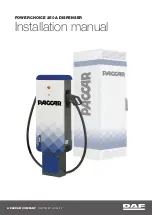
Therefore, observe the following notes:
R
due to salt build-up on the brake disks and
brakepads, the braking distance can increase
considerably or result in braking only on one
side
R
maintain a much greater safe distance to the
vehicle in front
To remove salt build-up:
R
brake occasionally while paying attention to
the tra c conditions
R
carefully depress the brake pedal at the end of
the journey and when starting the next jour-
ney
NNoottes on aq
es on aquaplaning
uaplaning
Aquaplaning can take place once a certain
amount of water has accumulated on the road
surface.
Observe the following notes during heavy precipi-
tation or in conditions in which aquaplaning may
occur:
R
reduce speed
R
avoid tyre ruts
R
avoid sudden steering movements
R
brake carefully
%
Also observe the notes on regularly checking
wheels and tyres (
/
page 365).
NNoottes on dr
es on driving t
iving thr
hrough w
ough wat
ater on t
er on the r
he road sur-
oad sur-
fface
ace
Water which has entered into the vehicle can
damage the engine, electrics and transmission.
Water can also enter the air intake of the engine
and cause engine damage.
Observe the following if you must drive through
water:
R
The water, when calm, may only reach the
lower edge of the vehicle body.
R
Drive at a maximum speed of 10 km/h; water
can otherwise enter the vehicle interior or
engine compartment.
R
Vehicles travelling in front, or oncoming vehi-
cles, can create waves which may exceed the
maximum permissible depth of the water.
The braking e ect of the brakes is reduced a er
fording. Brake carefully while paying attention to
the tra c conditions until braking power has been
fully restored.
EC
ECO st
O star
art/st
t/stop function
op function
EC
ECO st
O star
art/st
t/stop function
op function
%
The ECO start/stop function is not available
in all drive programs, depending on the
engine. Observe the status display in the
instrument display for this.
If all vehicle-related conditions for an automatic
engine stop are met, the engine is switched o
automatically:
R
VVehicles wit
ehicles with manual tr
h manual transmission:
ansmission: You brake
the vehicle, shi into neutral
i
when travel-
ling at a low speed and then release the clutch
pedal.
R
VVehicles wit
ehicles with aut
h automatic tr
omatic transmission:
ansmission: You
brake the vehicle to a standstill in transmis-
sion position
h
or
i
.
R
You activate the HOLD function or engage
transmission position
j
.
166
166 Driving and parking
Summary of Contents for CLA
Page 2: ......
Page 3: ......
Page 9: ...Le hand drive vehicles 6 6 At a glance Cockpit ...
Page 12: ......
Page 13: ...Le hand drive vehicles 10 10 At a glance Cockpit Plug in Hybrid ...
Page 15: ...Instrument display standard 12 12 At a glance Indicator and warning lamps standard ...
Page 19: ...16 16 At a glance Overhead control panel ...
Page 21: ...18 18 At a glance Door operating unit and seat adjustment ...
Page 23: ...20 20 At a glance Emergencies and breakdowns ...
Page 523: ......
Page 524: ......
Page 525: ......
















































